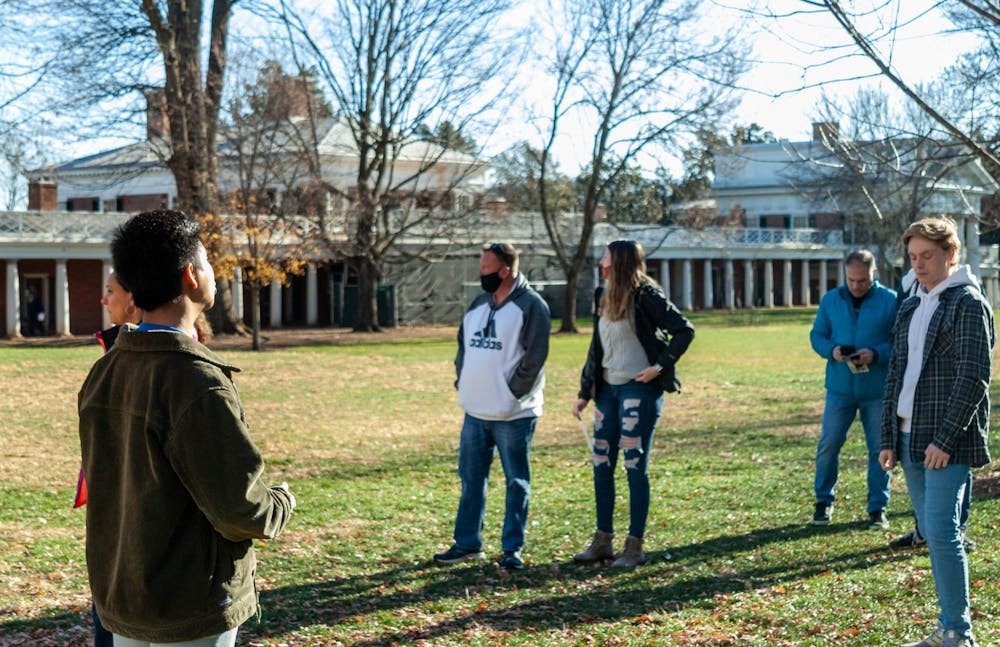The University received a record-breaking 50,813 applications for the Class of 2026, marking a 6 percent increase from the last year’s total of 47,971 applications. The admissions cycle ended Jan. 5 after the regular decision deadline.
Of the 50,813 applicants, 32 percent applied during the regular decision cycle, while 61 percent came from the early action cycle and 7 percent applied during the early decision cycle. This cycle, both early action and early decision applications were due on Nov. 1. These statistics are similar to those of the Class of 2025 applicant pool, during which 61 percent of students applied early action and 6 percent applied early decision.
The early decision cycle is a binding application process under which students who are admitted to the University must enroll and submit a deposit. Applicants who are deferred during early decision are reviewed as a part of the regular decision pool. Early action applications are non-binding and allow students to wait until May 1 to confirm their enrollment.
The regular decision admission cycle does not close until Jan. 5 and notifies students of their application status by April 1, allowing students more time to compile applications and offering the opportunity to submit senior year grades as a component of the application. On Jan. 3, the original application deadline, the Office of Admissions announced that the deadline would be extended until Jan. 5 due to a winter storm in Charlottesville that left thousands without power.
The binding early decision option was reintroduced in 2019 for the first time since 2006 and the number of early decision applications increased by 35 percent from 2019-20 to 2020-21.
The proportion of white applicants over all three admissions cycles remained similar to the Class of 2025, increasing slightly from 23,514 to 23,534. White students constituted 46 percent of the applicant pool.
The percentage of non-white applicants overall increased relative to last year — 37 percent, or 16,174 applicants, reported identifying as non-white. The largest increases were in Asian applicants, which rose 13 percent from 7,375 applicants last year to 8,375 applicants this year.
From the Class of 2025, the number of African American applicants increased by 8 percent from 3,034 to 3,274, the number of Hispanic applicants increased by 7 percent from 4,173 to 4,483 applicants and the number of Native American applicants increased from 40 to 42 percent.
“We have worked extremely hard recruiting underserved and underrepresented students, hosting three on-Grounds open house events in the fall for prospective [first-generation], African American, and Hispanic students,” Dean of Admissions Greg Roberts said in an email statement to The Cavalier Daily. “We continue to offer a host of virtual programming and events for prospective students.”
The number of international applicants increased 19 percent from 5,043 to 6,000 this year. International students constituted 12 percent of last year’s applicant pool.
The number of first-generation applications increased by 22 percent from 5,978 to 7,342 last year. The number of applicants using a fee waiver for the University’s $70 application fee also increased by 29 percent.
The University provides a variety of measures to increase the accessibility of a University education — which is especially important for students applying through the binding early decision option. Application and enrollment deposit fee waivers are offered to qualifying applicants and the AccessUVA program through Student Financial Services was established to encourage low-income students to visit and apply to the University during the early decision cycle despite binding acceptances. Applicants are encouraged to take part in a Free Application for Federal Student Aid workshop through Student Financial Services before applying to ensure they are awarded full eligible aid.
Last year, the University matched with 15 Questbridge Scholars — a full four-year tuition package for low-income students with no parental contribution required. According to Roberts, in recent years the University has only matched with 10.
The number of applicants applying with legacy status — defined as having at least one parent who previously attended the University — increased by 1 percent from 2,714 in the 2021 application cycle to 2,720 this year.
Applicants represent over 132 countries, all 50 states and 440 Virginia high schools. 14,369 applicants were from Virginia, constituting 28 percent, while 36,531 were out-of-state. As per University policy, two thirds of any matriculating class must be in-state applicants.
After moving all tours and information sessions online in March 2020 due to the COVID-19 pandemic, the University resumed in-person undergraduate admission tours June 14. The University Guide Service and the Office of Undergraduate Admissions continued to offer weekly virtual information sessions alongside limited in-person tours.
42 percent of applicants opted not to submit a standardized test score with their applications – the same percentage of applicants in the prior year.
After an initial announcement that standardized tests would be optional for applicants for the 2021 admission cycle in June 2021, the University extended its policy last year. The decision was motivated by ongoing closures of testing sites due to the COVID-19 pandemic and equity concerns about access to testing resources for low-income and first-generation students.
Overall, all undergraduate schools within the University saw an increase in applicants with the exception of the School of Nursing, which saw a five percent decline in applications. The School of Nursing experienced an influx of applicants in 2021, with a 51 percent increase in applications, and admitted their most diverse class. The School of Architecture experienced the largest increase in applications — a 21 percent rise from 960 to 1163 applicants.
CORRECTION: A previous version of this article misstated the percent increase of legacy student applications between the Class of 2025 and the Class of 2026. The article has been updated to reflect the correct percent.







